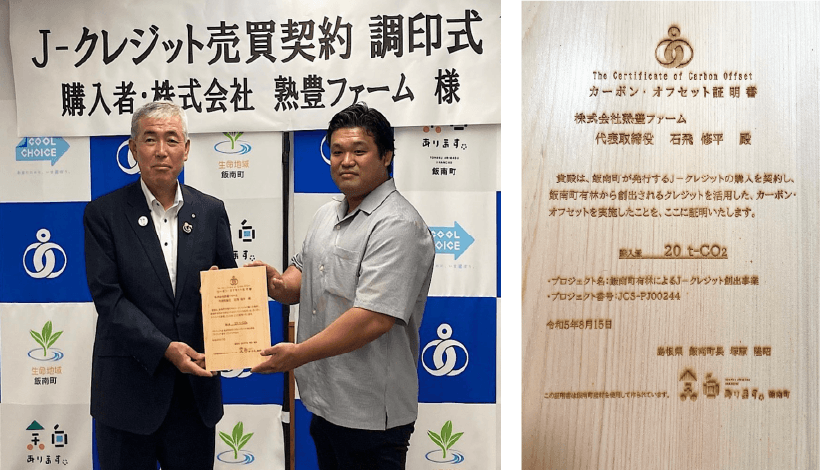1.Crop Livestock Collaboration
The compost produced from Sustainable Wagyu JUKU is fully matured and then provided to nearby farms that grow grains and vegetables.
From these farms, rice straw, wheat straw, and forage crops are returned to us as roughage, while dent corn and sweet potatoes—by-products generated during food processing—are taken back as ingredients for our TMR feed.
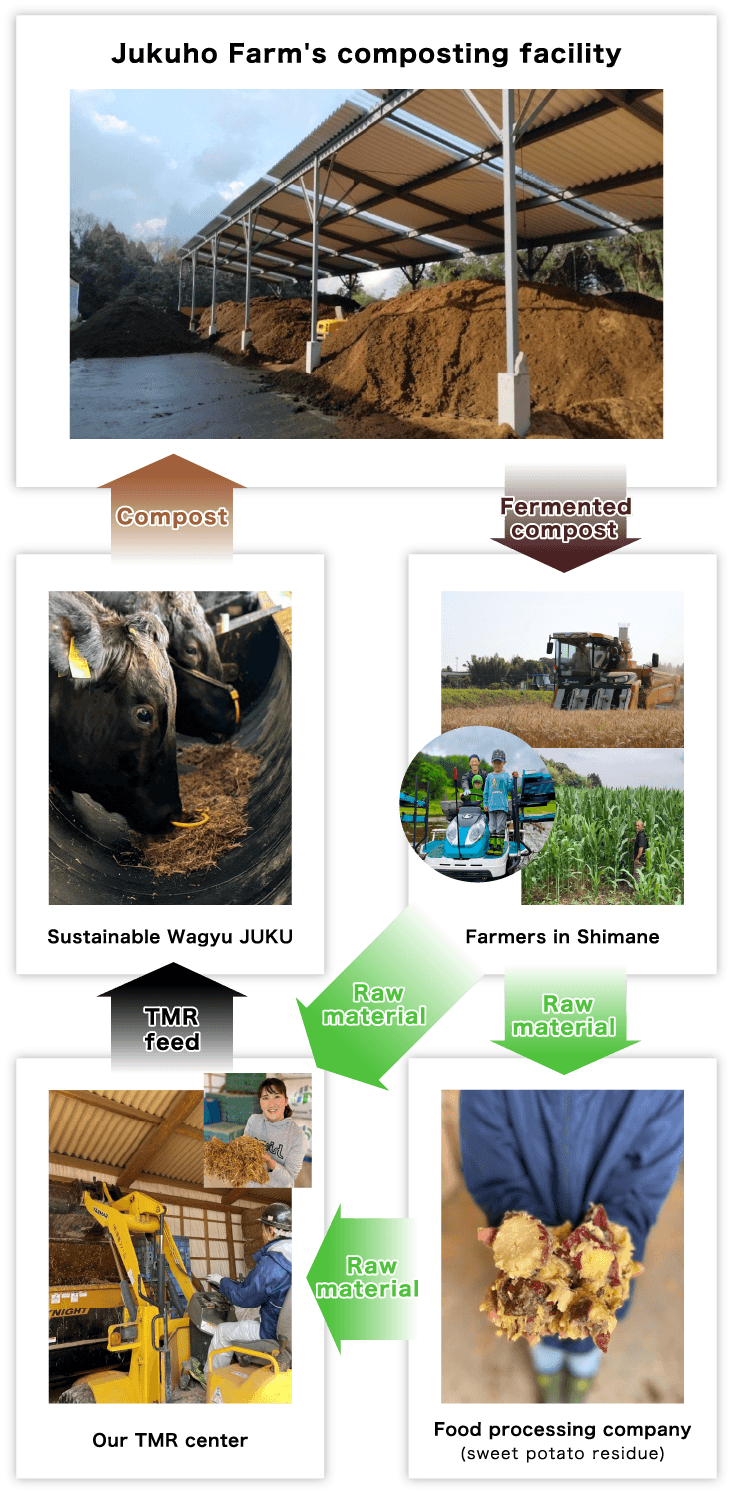
2.Produce TMR(Total Mixed Ration) by ourselves
We produce TMR using by-products from food manufacturing, such as sweet potatoes, soy sauce lees, soy milk lees, Izumo soba, and miso. These are scraps, pressed residues, and off-spec products that are generated during food production and were previously disposed of, but we collect and repurpose them as feed ingredients. Since these by-products come from items originally made for human consumption, they are of high quality and rich in nutrients, making them highly efficient as feed.
For us, these materials are not “food waste” but valuable by-products that contribute to maintaining and improving the health of our cattle.

3.Efforts to Reduce Methane Emissions
Cattle have four stomachs, and when they digest pasture and feed in the first stomach (rumen), methane gas is produced and expelled as burps. Methane is a greenhouse gas alongside carbon dioxide (CO₂), and its global warming potential is estimated to be about 25 times that of CO₂. Therefore, methane emissions from cattle have a significant impact on global warming.
To reduce methane emissions from cattle, the administration of “cashew nut shell liquid” was considered promising. As a result, our company conducted a demonstration trial and measured methane emissions during the feeding period, obtaining data showing that methane was reduced by up to 63%.
As of May 1, 2025, cashew nut shell liquid has been officially designated by the Ministry of Agriculture, Forestry and Fisheries as a feed additive that reduces greenhouse gas emissions from cattle, such as those from burps.
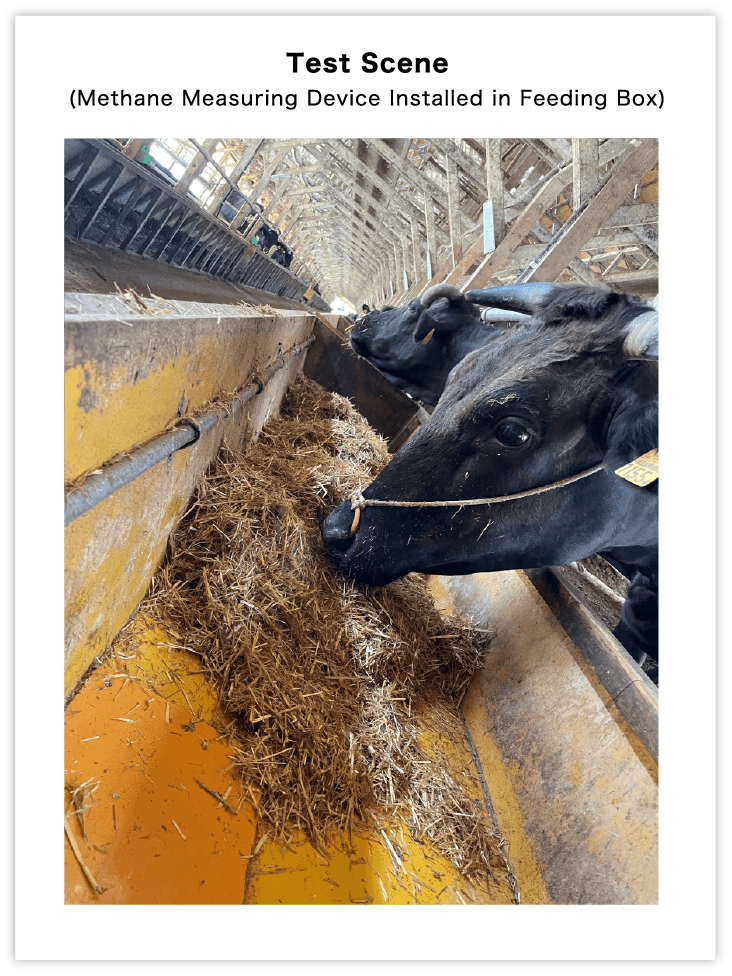
Results of Methane Measurements in Demonstration Trials at Sustainable Wagyu JUKU
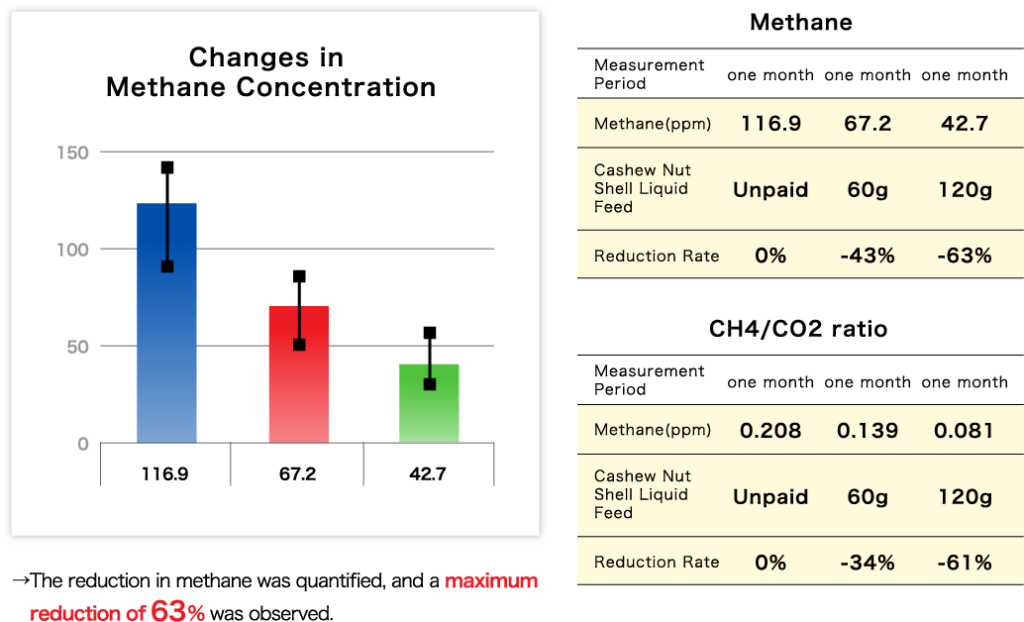
The reduction of greenhouse gas emissions at Sustainable Wagyu JUKU has been recorded as measurable data, serving as documented evidence from the demonstration trial (a factual validation).
Fat-rich feeds are also said to be effective in suppressing methane production in the rumen. By-products from soybean-based food production, such as okara, contain fats that are rich in unsaturated fatty acids, including linoleic and linolenic acids. Since unsaturated fatty acids are considered more effective at reducing methane, we believe that the combination of the Sustainable Wagyu JUKU Refeeding Program and cashew nut shell liquid feed has led to a more effective methane reduction.
4.First cattle barn construction by shrine temple carpentars in Japan
We built the cattle barn by reusing leftover timber from shrines and temples that would otherwise have been discarded. This is Japan’s first cattle barn to apply the traditional construction techniques of Japanese shrine and temple architecture, offering exceptional safety and durability.
Through a novel collaboration between shirine and temple carpenters and the livestock industry, we have created a barn that can be maintained for generations. The project has attracted significant attention within the industry and has been featured in the media. Moreover, as the renovation and new construction of shrines and temples decline due to a shortage of successors and decreasing parishioners, this initiative also creates new opportunities for shirine and temple carpenters.
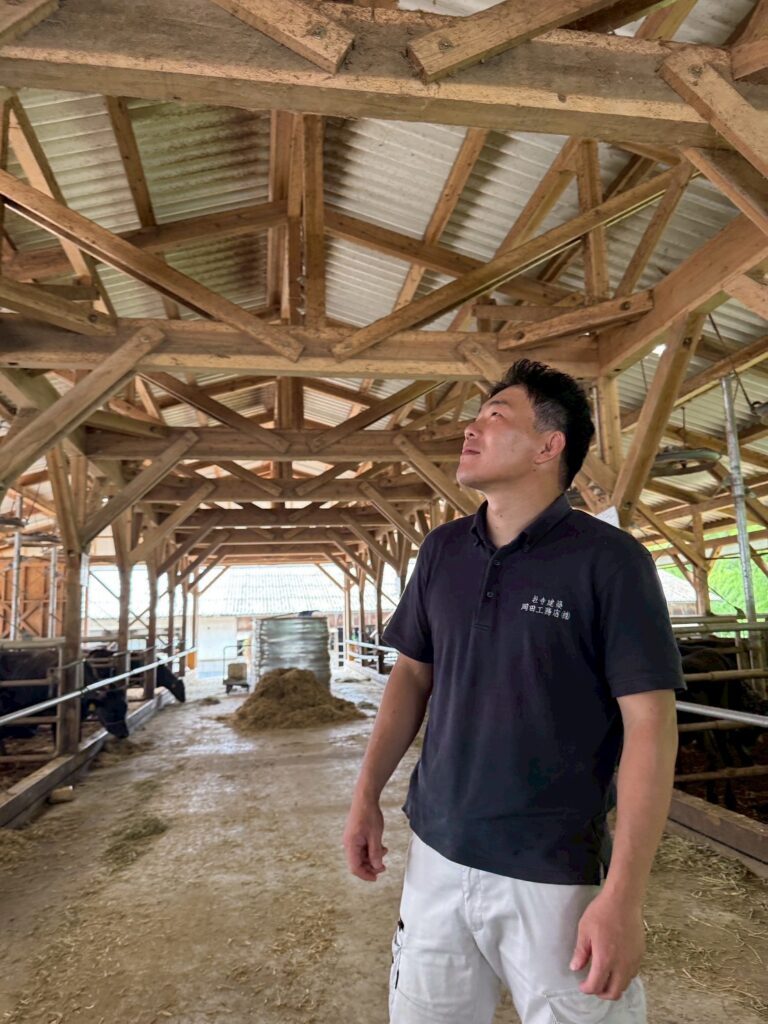
5.Use of Sawmill and Food Manufacturing By-products as Bedding
We use shavings from hinoki cypress and tea leaves mixed with sawdust and wood chips as bedding for the cattle.
Shavings, sawdust, and wood chips are generated during lumber processing and are typically treated as waste. Similarly, tea leaves and other by-products are discarded due to being off-spec. Shavings and sawdust have high water absorption and moisture retention, while tea leaves offer excellent antibacterial and deodorizing effects, making them high-quality bedding for cattle.

6.Carbon offsetting
We purchased 20 tons of carbon credits from Iinan Town, Shimane Prefecture. The use of heavy machinery, such as tire loaders, and trucks for transporting cattle is indispensable for cattle farming. This initiative aims to offset the carbon dioxide emitted from these activities by leveraging the absorption capacity of Iinan Town’s abundant forests.
